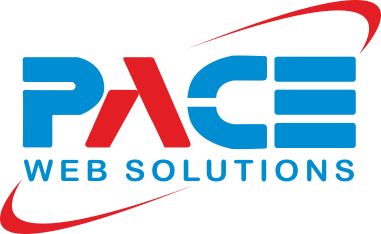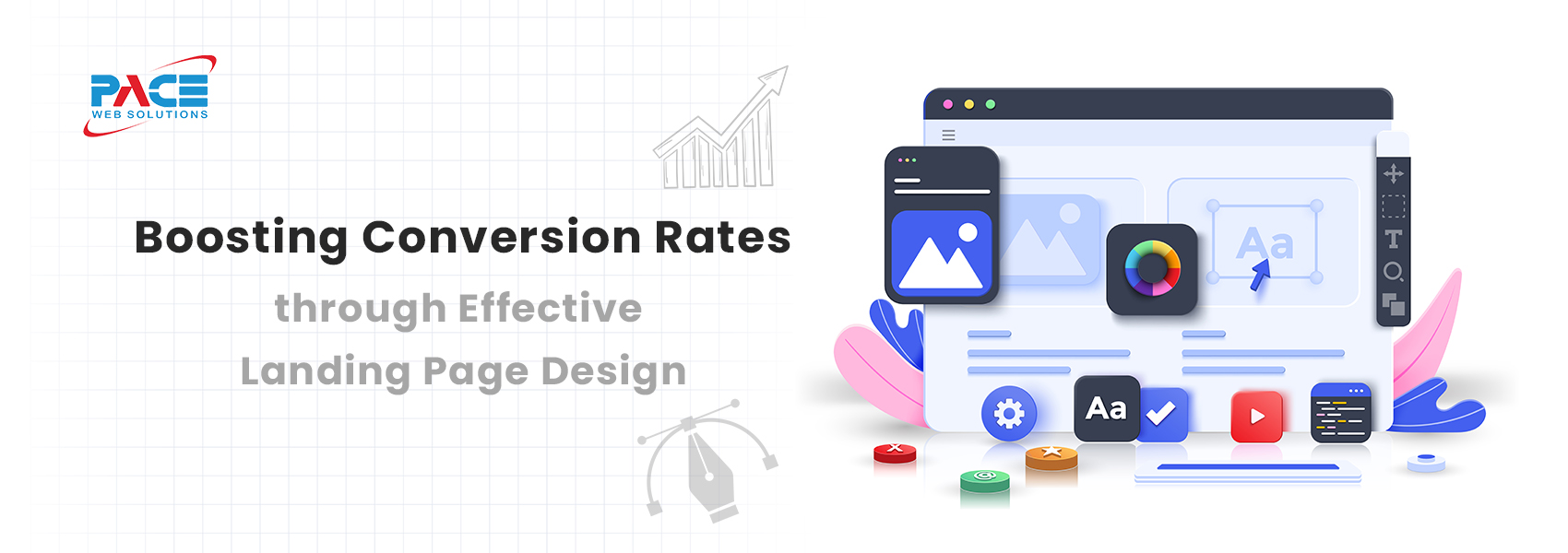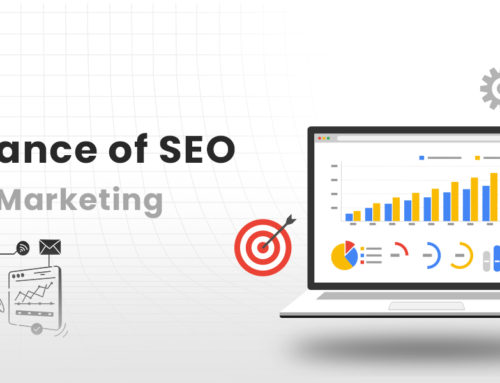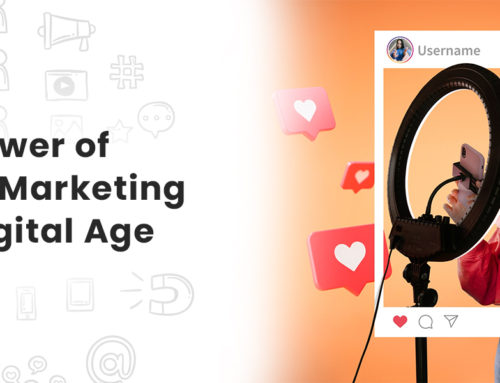In the fast-paced world of online marketing, businesses are constantly working towards maximising their conversion rates and achieving their marketing goals. One effective strategy to accomplish this is by creating a compelling landing page design. Acting as a pivotal entry point to conversions, a well-crafted landing page captures the attention of potential customers and guides them towards taking the desired action.In this blog, we will explore the key elements of a successful landing page design and discuss how partnering with a top digital marketing agency in Mumbai can elevate your conversion rates to new heights.
Table of Contents
Definition of a Landing Page:
A landing page is a web page specifically designed to capture the attention and interest of visitors and persuade them to take a desired action. It serves as a focused entry point for users who click on a specific link or advertisement. A well-crafted landing page design plays a crucial role in optimising conversion rates and achieving marketing goals. It typically contains concise and compelling content, visually appealing elements, and a clear call-to-action.
Importance of Conversion Rates in Online Marketing:
Conversion rates play a vital role in the success of online marketing campaigns, and landing page design is a key factor that directly impacts these rates. The conversion rate refers to the percentage of website visitors who take a desired action, such as making a purchase or filling out a form. An effective landing page design increases the likelihood of conversions by creating a seamless and persuasive user experience.
Purpose of the Outline:
The purpose of this blog is to provide actionable insights and strategies to enhance conversion rates through effective landing page design. By following the outlined principles, businesses can create landing pages that captivate and convert visitors, resulting in improved marketing performance. The subsequent sections will delve into specific techniques, including crafting compelling headlines, developing persuasive copy, incorporating visually appealing elements, optimising calls-to-action, and streamlining the conversion process. Each strategy will be discussed in detail, providing valuable guidance to businesses seeking to optimise their landing pages for maximum conversions.
Understanding the Target Audience:
One of the most important elements in creating a successful landing page is to have an in-depth understanding of your target audience. You can personalise your landing page to resonate with them and boost the chance of conversion by collecting insights into their requirements, preferences, and motivations. If you want to know how audience targeting works then you can visit this blog. Here are some key aspects to consider:
Identifying the Target Audience’s Needs and Preferences:
Start by identifying the specific group of individuals or businesses that are most likely to be interested in your product or service. Consider their demographics, such as age, gender, location, and occupation. Then, delve deeper into their psychographics, including their interests, values, challenges, and aspirations. This information will help you align your landing page design with their expectations and preferences.
Conducting Market Research and User Testing:
Market research is essential for knowing your target audience. Use surveys, interviews, or focus groups to gather feedback and insights. Analyse competitor landing pages to identify successful elements and areas for improvement.Use analytics tools to gather vital data on user behaviour, such as click-through rates, bounce rates, and time spent on the page. These insights will help you make informed decisions when designing your landing page.
Creating Buyer Personas:
Developing buyer personas is a valuable technique to understand your target audience at a more personal level. A buyer persona is a fictitious portrayal of your ideal customer’s qualities, aspirations, obstacles, and purchasing behaviours. By creating detailed personas, complete with names, backgrounds, and motivations, you can tailor your landing page design and content to resonate with each persona. This personalization can significantly improve the effectiveness of your landing page in engaging and converting visitors.
Addressing Pain Points and Offering Solutions:
Once you have a clear understanding of your target audience, focus on identifying their pain points or challenges. Determine how your product or service may solve or alleviate such problems. Highlight these solutions prominently on your landing page to capture the attention and interest of your visitors. You may increase the chance of conversion by proving that you understand their requirements and have the resources to meet them.
Clear and Compelling Headline:
While creating a landing page design headline plays a crucial role. source ( instapage ) The headline of your landing page is the first thing visitors see and has a significant impact on their decision to stay or leave. To boost conversion rates, it’s crucial to craft a clear and compelling headline that grabs attention, communicates the unique value proposition, and aligns with the ad or marketing campaign that brought the visitor to the landing page. Here’s how to create an effective headline:
Crafting an Attention-Grabbing Headline
Start by creating a headline that immediately grabs the visitor’s attention. Use action phrases, a query, or a forceful remark to capture their interest. Consider employing emotional power phrases that generate a sense of urgency or exclusivity. Instead of a generic title like “Learn about our product,” consider something like “Unlock the Secrets to Success in Just 7 Days.” Communicate the One-of-a-Kind Value Proposition: Your title should clearly express your product or service’s unique value proposition.
Communicate the Unique Value Proposition:
Communicating the unique value proposition effectively, a landing page can differentiate itself from competitors and highlight the benefits that set it apart. The headline should address the pain points or needs of the target audience and offer a solution or promise a desirable outcome. A well-crafted headline in landing page design not only piques curiosity but also establishes a strong initial connection with visitors, motivating them to continue reading and take the desired action. For example, “Revolutionise Your Business with Our Cutting-Edge Marketing Automation Software.”
Aligning the Headline With the Ad or Marketing Campaign
Aligning the headline with the ad or marketing campaign is a crucial aspect of landing page design that enhances the overall effectiveness of the campaign. When visitors click on an ad or promotional material, they expect to be taken to a landing page that delivers on the promise made in the ad. By aligning the headline with the ad or campaign, the landing page creates a seamless and consistent user experience. It reinforces the messaging and expectations set by the ad, building trust and credibility with the visitor.
Concise and Persuasive Content:
Concise and persuasive content is a fundamental component of effective landing page design. In a world where attention spans are limited, it is crucial to deliver information in a clear and concise manner. The content on a landing page should be focused, presenting key benefits and compelling arguments in a succinct and impactful way. By eliminating unnecessary fluff and getting straight to the point, concise content grabs the visitor’s attention and keeps them engaged. However, being concise doesn’t mean sacrificing persuasion. Each word and sentence should be carefully crafted to persuade the visitor to take the desired action.
Keeping the Content Concise and Focused:
Ensure that your content is concise and to the point. Use simple, plain language that is easy to grasp. Avoid using too much jargon or technical phrases that may confuse your viewers. Eliminate any unnecessary information that doesn’t directly contribute to the main message or call-to-action. Use short paragraphs, bullet points, and subheadings to break down the content into scannable sections, allowing visitors to quickly grasp the key points.
Highlighting the Benefits and Features of the Product or Service:
Clearly communicate the benefits and features of your product or service. Describe how it addresses an issue or meets a need for your intended audience. Concentrate on the value it offers and how it may benefit their lives or enterprises. Use compelling statements to highlight the unique selling points and advantages of choosing your offering over others. Incorporate testimonials or customer success stories to provide social proof and further reinforce the benefits.
Utilising Persuasive Language and Storytelling Techniques:
Make an emotional connection with your audience by using compelling words. Use strong, descriptive phrases that elicit good emotions and give a sense of urgency. Create material that tells a narrative and engages the reader. Use tales or case studies, for example, to show how your product or service has changed the lives of prior consumers. Appeal to your audience’s goals, desires, or pain spots to connect with them on a deeper level.
Call-to-Action (CTA) Optimization:
The call-to-action (CTA) on your landing page is the ultimate goal of your content—it’s where you want your visitors to take action. Optimizing your CTA can significantly impact your conversion rates. If you want to improve your conversion rate with CTA then you can visit this blog. source ( callpage ). Here are some strategies to make your CTA more effective:
Placing a Prominent and Visually Appealing CTA:
Placing a prominent and visually appealing call-to-action (CTA) is a crucial aspect of effective landing page design. A well-designed CTA acts as a focal point that captures the visitor’s attention and directs their actions. By strategically positioning the CTA in a prominent location on the landing page, such as above the fold or at the end of engaging content, it becomes easily noticeable and accessible. To make it visually appealing, the CTA should have an eye-catching design that stands out from the rest of the page, utilising contrasting colours, attractive fonts, and compelling visuals.
Using Clear and Action-Oriented Language:
Using clear and action-oriented language is a fundamental aspect of successful landing page design. By employing concise and straightforward language, landing pages can effectively communicate the value proposition and motivate visitors to take the desired action. Action-oriented language, on the other hand, prompts visitors to take immediate steps, creating a sense of urgency and compelling them to act. By using verbs and phrases that inspire action, such as “Get started,” “Sign up now,” or “Claim your offer,” landing pages can drive conversions and increase engagement.
Creating a Sense of Urgency or Exclusivity
Creating a sense of urgency or exclusivity is a powerful technique in landing page design that compels visitors to take immediate action. By incorporating time-sensitive offers, limited availability, or exclusive promotions, landing pages can ignite a sense of urgency and drive conversions. Urgency can be conveyed through countdown timers, limited-time discounts, or expiring offers, while exclusivity can be emphasised by highlighting unique features, VIP access, or limited availability.
Visual Design and Layout:
The visual design and layout of your landing page have a significant impact on how visitors perceive and engage with your content. A well-designed and organised page can enhance user experience, increase trust, and improve conversion rates. Here are some key strategies to optimise the visual design and layout of your landing page:
Ensuring a Clean and Uncluttered Design
Ensuring a clean and uncluttered design is crucial in effective landing page design. A cluttered page overwhelms visitors and hampers their ability to focus on the key message and call-to-action. By employing a clean design, landing pages can provide a visually pleasing and user-friendly experience. A clutter-free layout allows important elements such as headlines, visuals, and CTAs to stand out and capture attention.
Using High-Quality and Relevant Imagery
Using high-quality and relevant imagery is a vital aspect of landing page design that can significantly enhance user engagement and convey key messages effectively. The right images can captivate visitors, evoke emotions, and communicate the value of the product or service being offered. By using high-quality images, landing pages can create a visually appealing and professional impression, building trust and credibility with the audience. It is essential to choose imagery that is not only visually appealing but also relevant to the content and message of the page.
Organising Content with Clear Sections and Sequence
Organising content with clear sections and sequence is a crucial element of effective landing page design. By presenting information in a structured and logical manner, landing pages can guide visitors through a seamless user experience. Clear sections allow for easy navigation and comprehension, enabling visitors to quickly find the information they are looking for. Each section should have a distinct purpose and be strategically placed to build a persuasive narrative. A well-organised sequence ensures that visitors are led from one section to another in a logical flow, gradually building interest and addressing their needs or pain points.
Mobile Responsiveness:
In today’s mobile-centric world, optimising your landing page for mobile devices is essential to provide a seamless and user-friendly experience for mobile users. If you want to go deeper then you can visit our other blog where you can learn how you can make your website google ai search engine friendly. Here are some strategies to ensure mobile responsiveness and improve performance on mobile devices:
Use Responsive Design:
Using responsive design is crucial in landing page design to ensure an optimal user experience across various devices and screen sizes. With the increasing prevalence of mobile browsing, it is essential that landing pages adapt and display correctly on smartphones, tablets, and desktop computers. Responsive design allows the landing page to automatically adjust its layout, font sizes, and content placement to fit different screen resolutions. This ensures that visitors can easily navigate and interact with the landing page, regardless of the device they are using.
Incorporate Adaptive Elements:
Incorporating adaptive elements is a critical aspect of modern landing page design that ensures a personalised and engaging user experience. Adaptive elements dynamically adjust and customise the content based on user preferences, behaviours, or demographics. By analysing data such as location, browsing history, or past interactions, landing pages can deliver relevant and targeted content to each visitor. Adaptive elements can include personalised product recommendations, dynamic pricing, or tailored messaging based on user segments.
Ensure Fast Loading Times:
Ensuring fast loading times is a critical factor in successful landing page design. In today’s fast-paced digital landscape, users expect instant access to information, and a slow-loading page can lead to frustration and high bounce rates. By optimising landing pages for fast loading times, marketers can provide a seamless and engaging user experience. This can be achieved through various techniques such as optimising image sizes, minimising server requests, and leveraging caching mechanisms. A fast-loading landing page not only improves user satisfaction but also positively impacts search engine rankings, as search engines prioritise websites with faster loading times. By prioritising fast loading times in landing page design, marketers can capture and retain the attention of visitors, increase user engagement, and maximise the chances of conversions.
Building Trust and Credibility:
Establishing trust and credibility on your landing page is crucial for converting visitors into customers. When people trust your brand, they are more likely to engage with your content and take the desired action. Here are some effective strategies to build trust and credibility:
Incorporate Customer Testimonials and Reviews:
Incorporating customer testimonials and reviews is a powerful strategy in landing page design to build trust, credibility, and social proof. By featuring genuine feedback from satisfied customers, landing pages can effectively showcase the positive experiences and results achieved by previous clients. Testimonials and reviews provide potential customers with valuable insights and reassurance about the product or service being offered. They create a sense of trust and credibility, as visitors can see real people who have benefited from the offering.
Display Trust Badges, Certifications, or Security Seals:
Displaying trust badges, certifications, or security seals is a crucial element of landing page design that helps establish trust and instil confidence in visitors. Trust badges and certifications, such as verified payment methods or industry-recognized awards, reassure potential customers that the landing page is legitimate and trustworthy. Security seals, such as SSL certificates or privacy protection icons, signal that the landing page takes the necessary measures to protect users’ sensitive information. By prominently featuring these trust symbols throughout the page, landing pages can alleviate concerns about security, privacy, and reliability.
Provide Transparent Contact Information and Privacy Policy:
Providing transparent contact information and a clearly stated privacy policy is a vital aspect of landing page design that fosters trust and demonstrates commitment to user privacy. By prominently displaying contact information, including phone numbers, email addresses, or live chat options, landing pages assure visitors that there is a reliable way to reach out and address any concerns or inquiries. This accessibility enhances credibility and allows for open communication, establishing a sense of trust between the business and potential customers. In addition, a well-defined privacy policy assures visitors that their personal information will be handled securely and in accordance with privacy regulations.
A/B Testing and Continuous Improvement:
To optimise your landing page and maximise its conversion rates, it’s crucial to conduct A/B testing and engage in continuous improvement. A/B testing allows you to compare different design elements, layouts, or content variations to determine which ones perform better. Here’s how you can leverage A/B testing and continuous improvement for your landing page:
Identify Testing Variables:
Identifying testing variables is a crucial step in optimising landing page design for maximum effectiveness. Testing variables involve analysing different elements of the landing page, such as headlines, CTAs, colour schemes, or imagery, to determine which versions yield the best results. By conducting A/B or multivariate testing, marketers can gather data and insights to make informed decisions about design modifications. Testing variables allow for experimentation and fine-tuning of the landing page to improve user engagement and conversions.
Create A/B Test Variations:
Creating A/B test variations is a key practice in landing page design that allows marketers to compare different versions and identify the most effective elements. By creating multiple variations of a landing page and testing them against each other, marketers can gather valuable data on user behaviour and preferences. A/B testing involves making specific changes to one element at a time, such as headlines, visuals, or CTA buttons, while keeping the rest of the page consistent. This allows for a clear comparison of the performance of each variation.
Analyze Conversion Data and User Behavior:
Analysing conversion data and user behaviour is a critical aspect of landing page design that allows marketers to gain valuable insights and make informed decisions. By utilising tools such as Google Analytics or heatmaps, marketers can collect data on visitor interactions, conversions, and engagement on the landing page. This data provides valuable information about user behaviour, including how visitors navigate the page, which elements they interact with the most, and where they drop off.
Integration with Analytics and Tracking:
Integrating analytics tools and tracking mechanisms into your landing page is crucial for measuring its performance, understanding user behaviour, and making data-driven decisions to improve conversion rates. Here’s how you can effectively implement analytics and tracking for your landing page:
Choose an Analytics Platform:
Choosing an analytics platform is a crucial step in optimising landing page design and understanding its performance. An analytics platform provides valuable data and insights into visitor behaviour, conversion rates, traffic sources, and other key metrics. It allows marketers to measure the effectiveness of their landing pages, track the success of marketing campaigns, and make data-driven decisions for optimization. When selecting an analytics platform for landing page design, it is important to consider factors such as the platform’s features, ease of use, compatibility with the website, and the level of detail and accuracy it provides. Popular analytics platforms like Google Analytics offer a wide range of tools and reporting capabilities that can be customised to suit specific business needs.
Track Relevant Metrics:
Tracking relevant metrics is essential in landing page design to measure the effectiveness and success of the page. By monitoring and analysing key metrics, marketers can gain valuable insights into the performance of their landing pages and make data-driven decisions for optimization. Relevant metrics may include conversion rate, bounce rate, average time on page, click-through rate, and engagement metrics such as scroll depth or form completion rates. These metrics provide insights into user behaviour, the impact of design changes, and the overall effectiveness of the landing page in achieving its goals. Analyse and Make Data-Driven Decisions:
Analysing data and making data-driven decisions is a fundamental practice in landing page design that leads to continuous improvement and optimal results. By carefully examining the metrics and insights gathered from analytics platforms, marketers can gain valuable information about user behaviour, engagement, and conversion rates. This data allows them to identify patterns, trends, and areas for improvement in the design and performance of the landing page. By using a data-driven approach, marketers can make informed decisions about design modifications, content changes, or user experience enhancements. They can experiment with different elements, run A/B tests, and measure the impact of each variation on key metrics.
Hope you understand these key elements. As you know all In today’s competitive digital landscape, businesses need to constantly strive for higher conversion rates to succeed in their online marketing efforts. Effective landing page design is a key factor in achieving this goal. By partnering with a reputable digital marketing company in Mumbai, businesses can tap into their expertise and experience in creating high-converting landing pages.
From understanding the importance of landing page design to tailoring it for maximum impact, optimising user experience, crafting compelling content, and implementing conversion rate optimization strategies, a digital marketing company in Mumbai can provide the necessary guidance and support. Their data-driven approach and industry knowledge can help businesses design landing pages that engage and convert their target audience effectively. By investing in an effective landing page design with the assistance of a reliable digital marketing company in Mumbai, businesses can elevate their conversion rates, increase customer engagement, and achieve success in the competitive online marketplace.





Leave A Comment